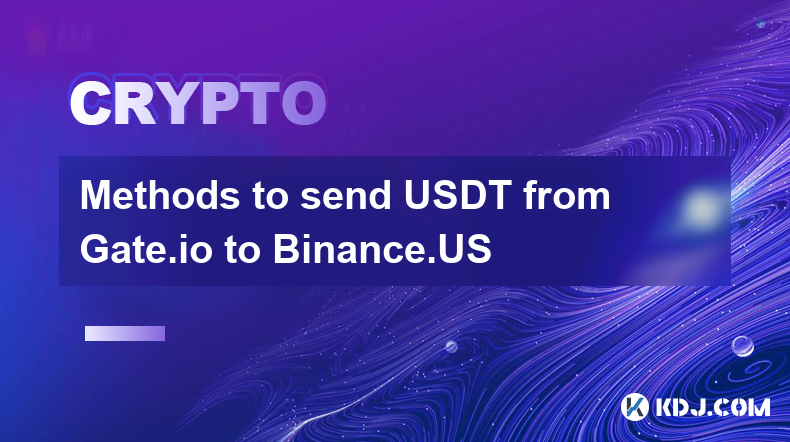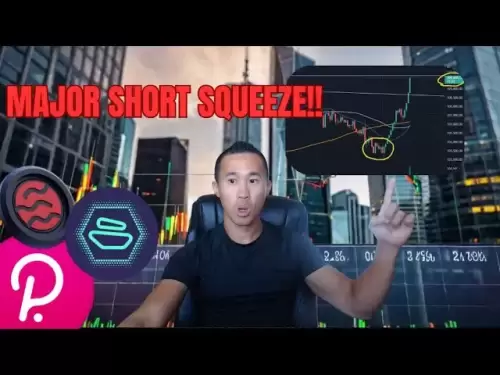-
 Bitcoin
Bitcoin $108,270.9768
2.07% -
 Ethereum
Ethereum $2,489.8066
2.50% -
 Tether USDt
Tether USDt $1.0004
0.01% -
 XRP
XRP $2.2035
0.66% -
 BNB
BNB $661.6608
2.32% -
 Solana
Solana $150.6425
2.13% -
 USDC
USDC $0.9999
-0.01% -
 TRON
TRON $0.2810
0.90% -
 Dogecoin
Dogecoin $0.1645
3.05% -
 Cardano
Cardano $0.5743
4.91% -
 Hyperliquid
Hyperliquid $38.8419
-0.15% -
 Bitcoin Cash
Bitcoin Cash $504.3134
-2.64% -
 Sui
Sui $2.8096
4.35% -
 Chainlink
Chainlink $13.3095
2.21% -
 UNUS SED LEO
UNUS SED LEO $8.9469
0.33% -
 Avalanche
Avalanche $17.9231
3.93% -
 Stellar
Stellar $0.2340
0.74% -
 Toncoin
Toncoin $2.8458
3.21% -
 Shiba Inu
Shiba Inu $0.0...01158
3.47% -
 Litecoin
Litecoin $86.0738
1.94% -
 Hedera
Hedera $0.1507
2.99% -
 Monero
Monero $319.8544
2.31% -
 Polkadot
Polkadot $3.4081
1.95% -
 Dai
Dai $1.0000
0.01% -
 Bitget Token
Bitget Token $4.5645
0.91% -
 Ethena USDe
Ethena USDe $1.0002
0.00% -
 Uniswap
Uniswap $7.2959
5.27% -
 Aave
Aave $272.4623
2.90% -
 Pepe
Pepe $0.0...09680
2.96% -
 Pi
Pi $0.4955
0.78%
Methods to send USDT from Gate.io to Binance.US
To transfer USDT from Gate.io to Binance.US, verify accounts, use correct addresses and networks, and be aware of fees and potential delays for a smooth transaction.
Apr 07, 2025 at 06:15 am

Sending USDT from Gate.io to Binance.US involves several steps that ensure the secure and efficient transfer of your cryptocurrency. Understanding these steps is crucial for anyone looking to move their digital assets between these two popular exchanges. This guide will walk you through the process, highlighting important considerations and potential pitfalls to avoid. Whether you're a seasoned trader or a newcomer to the crypto space, following these instructions will help you complete your transfer smoothly.
Preparing for the Transfer
Before initiating the transfer, it's essential to prepare adequately. This preparation involves ensuring that you have the necessary information and that your accounts on both platforms are ready for the transaction. Here are some key steps to take before you start the transfer process:
- Verify your accounts on both Gate.io and Binance.US. Both platforms require account verification to comply with regulatory standards. Ensure that your identity is verified on both exchanges to avoid any issues during the transfer.
- Check the wallet addresses. Make sure you have the correct USDT deposit address on Binance.US. Incorrect addresses can lead to the loss of your funds.
- Understand the network. USDT can be sent over different blockchain networks, such as TRC-20 (Tron) and ERC-20 (Ethereum). Ensure that you choose the correct network for your transfer to avoid delays or additional fees.
Step-by-Step Guide to Sending USDT from Gate.io to Binance.US
Now that you're prepared, you can proceed with the transfer. Follow these steps carefully to ensure a successful transaction:
- Log into your Gate.io account. Navigate to the wallet section and select the USDT wallet.
- Initiate a withdrawal. Click on the "Withdraw" button next to your USDT balance. Enter the amount of USDT you wish to transfer.
- Enter the recipient address. Carefully input the USDT deposit address from Binance.US. Double-check the address to avoid errors.
- Select the network. Choose the appropriate blockchain network for the transfer. If you're using the TRC-20 network, select "TRC20 (Tron)." For ERC-20, select "ERC20 (Ethereum)."
- Review and confirm the transaction. Check all the details, including the amount, recipient address, and network. Once you're sure everything is correct, confirm the transaction. You may be required to enter a two-factor authentication (2FA) code.
- Wait for the transaction to complete. Depending on the network, the transfer may take anywhere from a few minutes to several hours. You can track the progress of your transaction using a blockchain explorer.
Receiving USDT on Binance.US
Once the transfer is complete, you'll need to ensure that the USDT is successfully received on Binance.US. Here's what to do:
- Log into your Binance.US account. Navigate to the wallet section and select the USDT wallet.
- Check the transaction status. Look for the incoming transaction in your transaction history. The USDT should appear in your balance once the transaction is confirmed on the blockchain.
- Verify the amount. Ensure that the amount of USDT received matches the amount you sent from Gate.io. If there's a discrepancy, contact customer support on either platform for assistance.
Common Issues and Solutions
While the process is generally straightforward, you may encounter some issues. Here are some common problems and their solutions:
- Transaction delays. If your transaction is taking longer than expected, check the blockchain explorer to see the status of your transaction. Sometimes, network congestion can cause delays.
- Incorrect network selection. If you selected the wrong network for your transfer, the transaction may fail. In this case, you'll need to contact Gate.io support to see if the transaction can be reversed or if there are other solutions.
- Insufficient funds. Ensure that you have enough USDT in your Gate.io account to cover the transfer amount and any associated fees. If you don't have enough, the transaction will fail.
Fees and Considerations
When transferring USDT between exchanges, it's important to consider the fees involved. Both Gate.io and Binance.US may charge fees for withdrawals and deposits. Here are some key points to keep in mind:
- Withdrawal fees on Gate.io. Gate.io charges a fee for withdrawing USDT. The fee varies depending on the network you use. For example, TRC-20 withdrawals may have a lower fee than ERC-20 withdrawals.
- Deposit fees on Binance.US. Binance.US typically does not charge a fee for depositing USDT, but it's always a good idea to check the current fee structure on their website.
- Network fees. In addition to exchange fees, you'll need to pay a network fee for the blockchain transaction. These fees can fluctuate based on network congestion and other factors.
Security Tips
Security is paramount when dealing with cryptocurrency transfers. Here are some tips to keep your funds safe:
- Use strong passwords and 2FA. Ensure that both your Gate.io and Binance.US accounts are protected with strong, unique passwords and two-factor authentication.
- Double-check addresses. Always verify the recipient address before confirming a transaction. A single mistake can result in the loss of your funds.
- Use hardware wallets. If you're transferring large amounts of USDT, consider using a hardware wallet to store your funds securely.
Common Questions and Answers
Q: How long does it take to transfer USDT from Gate.io to Binance.US?
A: The transfer time can vary depending on the network you use. TRC-20 transfers typically take a few minutes, while ERC-20 transfers may take longer, sometimes up to an hour or more, depending on network congestion.
Q: Can I cancel a USDT transfer after it's been initiated?
A: Once a USDT transfer is initiated and confirmed on the blockchain, it cannot be canceled. If you realize you've made an error, you should contact Gate.io support immediately to see if there's anything that can be done.
Q: What should I do if I don't receive my USDT on Binance.US?
A: First, check your transaction history on Binance.US to see if the transaction is still pending. If it's been a significant amount of time and the transaction hasn't appeared, contact Binance.US support with the transaction details. They can help you investigate the issue.
Q: Are there any minimum or maximum limits for transferring USDT between Gate.io and Binance.US?
A: Both Gate.io and Binance.US may have minimum and maximum limits for USDT withdrawals and deposits. Check the specific limits on each platform's website before initiating a transfer.
Q: Can I transfer USDT using other networks besides TRC-20 and ERC-20?
A: USDT is available on several blockchain networks, including TRC-20, ERC-20, and others like BEP-20 (Binance Smart Chain). However, not all networks may be supported by both Gate.io and Binance.US. Always check the supported networks on both platforms before initiating a transfer.
Disclaimer:info@kdj.com
The information provided is not trading advice. kdj.com does not assume any responsibility for any investments made based on the information provided in this article. Cryptocurrencies are highly volatile and it is highly recommended that you invest with caution after thorough research!
If you believe that the content used on this website infringes your copyright, please contact us immediately (info@kdj.com) and we will delete it promptly.
- XRP Price Targets $2.40 After Descending Channel Breakout: Is $40 Next?
- 2025-07-03 08:50:12
- All Blacks' Loose Forward Conundrum: New Faces and Familiar Battles
- 2025-07-03 08:30:12
- Bitcoin's Wild Ride: Open Interest, Institutional Bets, and Billions on the Line
- 2025-07-03 08:30:12
- Bitcoin, Strategy, & Profit: MSTR's Crypto Playbook and Trump's Digital Diversification
- 2025-07-03 08:50:12
- INJ Price Bull Rally: Smashing Long-Term Resistance – Can It Last?
- 2025-07-03 09:10:12
- Robinhood, OpenAI, and Wallet History: A Tokenized Tale of Intrigue
- 2025-07-03 09:10:12
Related knowledge

How to customize USDT TRC20 mining fees? Flexible adjustment tutorial
Jun 13,2025 at 01:42am
Understanding USDT TRC20 Mining FeesMining fees on the TRON (TRC20) network are essential for processing transactions. Unlike Bitcoin or Ethereum, where miners directly validate transactions, TRON uses a delegated proof-of-stake (DPoS) mechanism. However, users still need to pay bandwidth and energy fees, which are collectively referred to as 'mining fe...

USDT TRC20 transaction is stuck? Solution summary
Jun 14,2025 at 11:15pm
Understanding USDT TRC20 TransactionsWhen users mention that a USDT TRC20 transaction is stuck, they typically refer to a situation where the transfer of Tether (USDT) on the TRON blockchain has not been confirmed for an extended period. This issue may arise due to various reasons such as network congestion, insufficient transaction fees, or wallet-rela...

How to cancel USDT TRC20 unconfirmed transactions? Operation guide
Jun 13,2025 at 11:01pm
Understanding USDT TRC20 Unconfirmed TransactionsWhen dealing with USDT TRC20 transactions, it’s crucial to understand what an unconfirmed transaction means. An unconfirmed transaction is one that has been broadcasted to the blockchain network but hasn’t yet been included in a block. This typically occurs due to low transaction fees or network congestio...

How to check USDT TRC20 balance? Introduction to multiple query methods
Jun 21,2025 at 02:42am
Understanding USDT TRC20 and Its ImportanceUSDT (Tether) is one of the most widely used stablecoins in the cryptocurrency market. It exists on multiple blockchain networks, including TRC20, which operates on the Tron (TRX) network. Checking your USDT TRC20 balance accurately is crucial for users who hold or transact with this asset. Whether you're sendi...

What to do if USDT TRC20 transfers are congested? Speed up trading skills
Jun 13,2025 at 09:56am
Understanding USDT TRC20 Transfer CongestionWhen transferring USDT TRC20, users may occasionally experience delays or congestion. This typically occurs due to network overload on the TRON blockchain, which hosts the TRC20 version of Tether. Unlike the ERC20 variant (which runs on Ethereum), TRC20 transactions are generally faster and cheaper, but during...

The relationship between USDT TRC20 and TRON chain: technical background analysis
Jun 12,2025 at 01:28pm
What is USDT TRC20?USDT TRC20 refers to the Tether (USDT) token issued on the TRON blockchain using the TRC-20 standard. Unlike the more commonly known ERC-20 version of USDT (which runs on Ethereum), the TRC-20 variant leverages the TRON network's infrastructure for faster and cheaper transactions. The emergence of this version came as part of Tether’s...

How to customize USDT TRC20 mining fees? Flexible adjustment tutorial
Jun 13,2025 at 01:42am
Understanding USDT TRC20 Mining FeesMining fees on the TRON (TRC20) network are essential for processing transactions. Unlike Bitcoin or Ethereum, where miners directly validate transactions, TRON uses a delegated proof-of-stake (DPoS) mechanism. However, users still need to pay bandwidth and energy fees, which are collectively referred to as 'mining fe...

USDT TRC20 transaction is stuck? Solution summary
Jun 14,2025 at 11:15pm
Understanding USDT TRC20 TransactionsWhen users mention that a USDT TRC20 transaction is stuck, they typically refer to a situation where the transfer of Tether (USDT) on the TRON blockchain has not been confirmed for an extended period. This issue may arise due to various reasons such as network congestion, insufficient transaction fees, or wallet-rela...

How to cancel USDT TRC20 unconfirmed transactions? Operation guide
Jun 13,2025 at 11:01pm
Understanding USDT TRC20 Unconfirmed TransactionsWhen dealing with USDT TRC20 transactions, it’s crucial to understand what an unconfirmed transaction means. An unconfirmed transaction is one that has been broadcasted to the blockchain network but hasn’t yet been included in a block. This typically occurs due to low transaction fees or network congestio...

How to check USDT TRC20 balance? Introduction to multiple query methods
Jun 21,2025 at 02:42am
Understanding USDT TRC20 and Its ImportanceUSDT (Tether) is one of the most widely used stablecoins in the cryptocurrency market. It exists on multiple blockchain networks, including TRC20, which operates on the Tron (TRX) network. Checking your USDT TRC20 balance accurately is crucial for users who hold or transact with this asset. Whether you're sendi...

What to do if USDT TRC20 transfers are congested? Speed up trading skills
Jun 13,2025 at 09:56am
Understanding USDT TRC20 Transfer CongestionWhen transferring USDT TRC20, users may occasionally experience delays or congestion. This typically occurs due to network overload on the TRON blockchain, which hosts the TRC20 version of Tether. Unlike the ERC20 variant (which runs on Ethereum), TRC20 transactions are generally faster and cheaper, but during...

The relationship between USDT TRC20 and TRON chain: technical background analysis
Jun 12,2025 at 01:28pm
What is USDT TRC20?USDT TRC20 refers to the Tether (USDT) token issued on the TRON blockchain using the TRC-20 standard. Unlike the more commonly known ERC-20 version of USDT (which runs on Ethereum), the TRC-20 variant leverages the TRON network's infrastructure for faster and cheaper transactions. The emergence of this version came as part of Tether’s...
See all articles

























































































